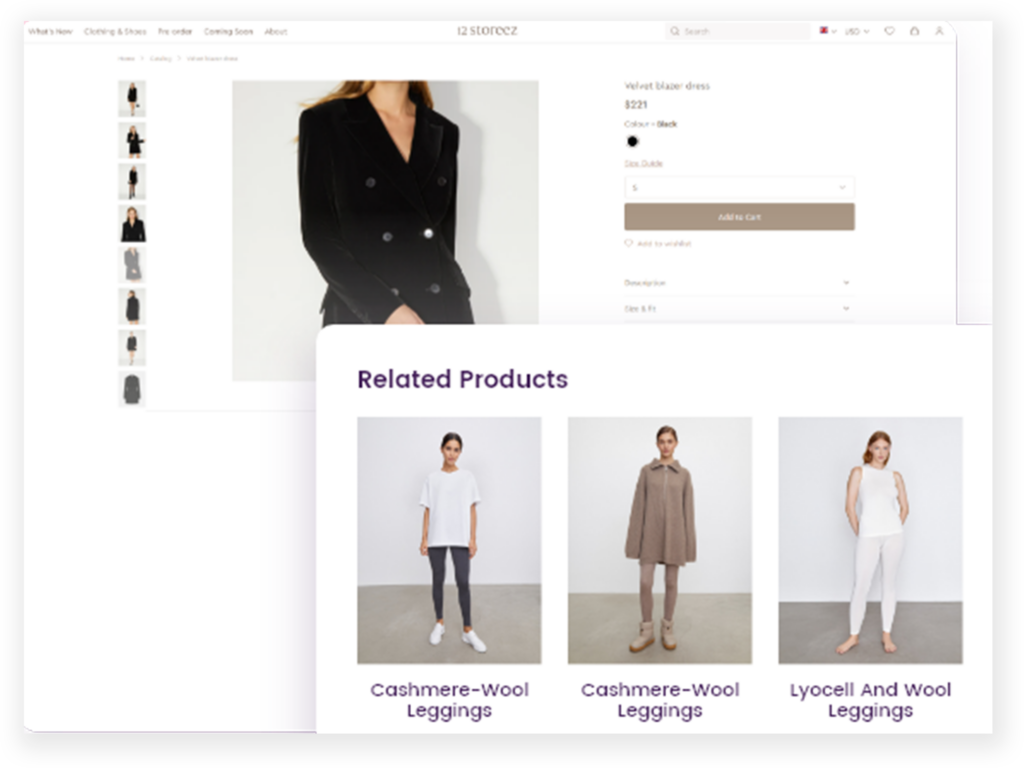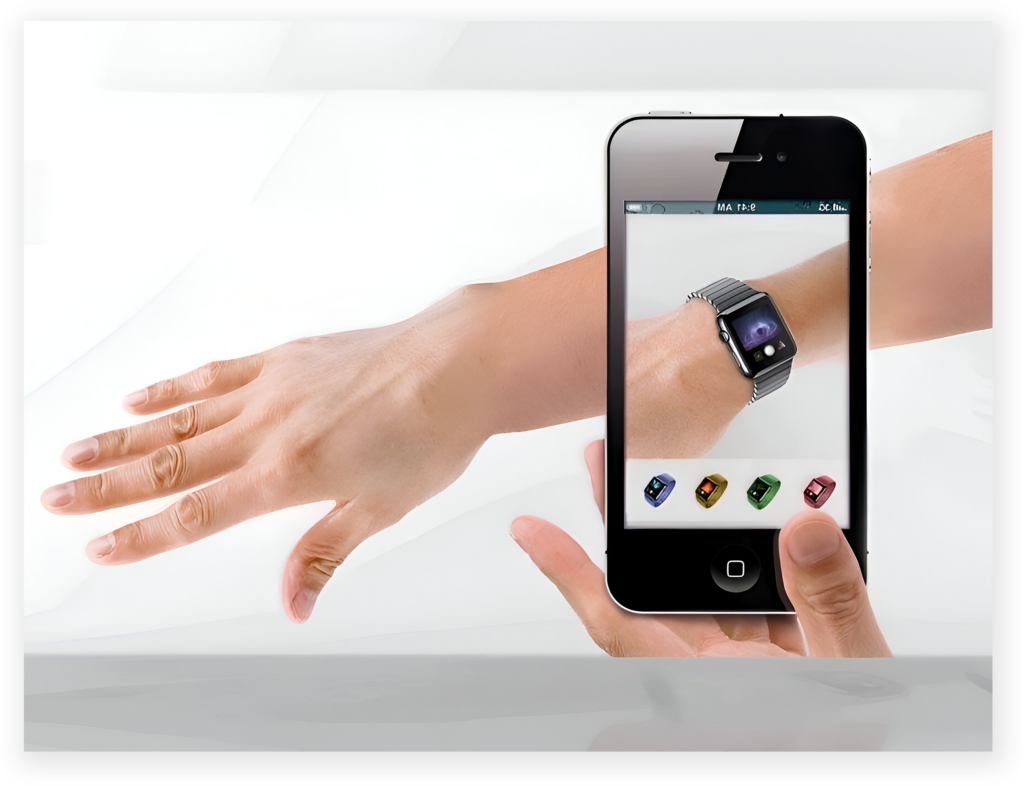While online shopping has completely revolutionized the retail scene in this digital world, the frontier between technological innovation and eCommerce Trends is changing fast. Imagine walking through a showroom where you can see every product in the most minute detail in three dimensions or shopping in a virtual space with friends from across the globe. Virtual eCommerce is an immersive experience that opens the possibility of shopping online as never conceived before.
What makes it the next step beyond traditional online shopping?
Virtual eCommerce introduces the transition from the traditional version of eCommerce to virtual and augmented reality-based eCommerce, thus providing a uniquely immersive and experiential online shopping journey. Virtual eCommerce eliminates the flat experiences, limited interactions, and boring product viewing.
A Virtual eCommerce store enables users to engage with products in a manner that simulates in-store interactions while simultaneously providing increased flexibility and convenience. Conventional eCommerce restricts shoppers from visualizing scale and texture or experiencing products firsthand, particularly for high-involvement items such as furniture or automobiles. However, virtual eCommerce addresses these limitations, offering shoppers a completely immersive experience.
Understanding virtual eCommerce and its differences.
Virtual eCommerce links Virtual Reality (VR) and Augmented Reality (AR) technologies in a successful integration into the online and offline shopping spheres. While some brands offer “try-on” AR features, virtual eCommerce is setting up complete virtual showrooms or environments for users to explore.
For instance, when buying footwear, virtual eCommerce lets the consumer input a three-dimensional image of a retail shop, select an item, the look of its orientation, and examine it from every angle. Using virtual and augmented reality technologies helps customers perceive “presence” in virtual eCommerce- thus different from traditional online shopping.
Basic Technologies Driving Virtual eCommerce
Modelling of three-dimensional products and holographic displays
The heart of virtual eCommerce Trends is 3D product modelling, where customers will see and experience items in photo-realistic detail. High-resolution 3D modelling changes the way that people browse products, providing actual, interactive imagery. This is very useful for industries like fashion and furniture, where consumers rely heavily on visual inspection for suitability and fit. For example, fashion clothing brand Gucci has used 3D models to offer products in virtual showrooms where customers can “wear” items before buying them.
Artificial Intelligence and Machine Learning for Personalization
AI-powered products offer real-time personalized recommendations for shoppers. Artificial intelligence collects data on shopper preferences, purchase history, and browsing patterns to help brands identify customers’ needs. For example, Sephora utilizes AI through virtual assistants, which helps users navigate through beauty product recommendations based on their skin type, tone, and personal preferences, improving the online shopping experience.

Secure Transactions through Blockchain
Blockchain technology guarantees secure and decentralized transactions, which is vital in safeguarding customers’ information within virtual eCommerce. Retailers such as Nike are investigating blockchain solutions to enhance the security of virtual product transactions, thereby fostering greater trust in virtual economies.
Spatial Computing and IoT Integration
The richness of virtual experiences and sensory feedback, partly through IoT-enabled devices and spatial computing, offers retailers new opportunities to develop more appealing VR shopping environments. They could allow customers to “feel” the fabric of a shirt using haptic feedback.
Lorem ipsum dolor sit amet, consectetur adipiscing elit. Ut elit tellus, luctus nec ullamcorper mattis, pulvinar dapibus leo.
Virtual Showrooms Redefining Retail
In-Store and Online Integration of Shopping
Virtual showrooms bring an in-store shopping experience into a digital space. Customers can view products in 3D, interact with sales assistants, and even check availability in real-time. The fashion, automotive, and home decor industries have introduced virtual showrooms. BMW brought virtual showrooms to customers’ doors, allowing them to explore car models and customize features or take a virtual “test drive” from their homes- an engaging experience encouraging participation and informed decision-making.

The virtual showroom of IKEA enables users to see products in virtual reality and how furniture integrates into their spaces using augmented reality. From here, customers can easily imagine a couch in their living rooms, making buying decisions easier and significantly reducing returns. This kind of showroom perfectly marries online browsing with the benefits of retail shopping, thus bringing both worlds the best benefits.
Social Shopping 2.0: How Virtual eCommerce Differs from Social Interactions
There is a new social dynamic called virtual shopping with friends.
Virtual eCommerce gives the social aspect to online shopping where, with virtual “meet-ups,” friends can now shop together. One can imagine buying a new outfit next to friends from other cities. Participants could view, discuss, and try on items in real-time. What Meta’s Horizon Workrooms have done with virtual meeting locations is all that is likely to happen in the form of virtual shopping venues and online shopping. It is amazing as an interactive experience, almost like a collective trip to the mall.

The influencers acquire a new room in the virtual spaces where one can stroll customers through product demos, create instructional content, or host events. Nike has engaged with virtual influencer campaigns across platforms such as Roblox, in which digital representatives will advocate Nike products at virtual retail locations. This strategy aligns with current social media shopping trends while taking them one step further into an immersive digital space.
The Virtual eCommerce Marketplace Understanding Digital Goods
Why Are Digital Assets In Demand?
A Virtual eCommerce store goes beyond the digitization of physical products, offering a marketplace for purely digital goods. NFTs and virtual real estate or digital clothing are rapidly emerging digital-only assets. Dolce & Gabbana, for example, allowed users to own unique virtual assets through bespoke digital clothing collections in the metaverse.
The Emergence of Metaverse Commerce
Ai in eCommerce makes it possible to extend to metaverse platforms, such as Decentraland and The Sandbox. Here, users buy, sell, and trade virtual goods. These platforms are becoming highly popular among younger generations for their digitally desirable understanding of identity and social capital within virtual spaces.
Future Trends in Virtual eCommerce: From Haptic Feedback to Brain-Computer Interfaces.
Haptic Feedback: Experiencing Products in Virtual Reality
The haptic feedback technology allows users to feel products are a part of virtual shopping, making a physical dimension of virtual eCommerce. Customers would be able to feel the touch of the texture of a fabric and weigh an object while browsing the goods in the virtual space. Companies like HaptX work on developing VR gloves with haptic feedback which may eventually bring this feeling to virtual eCommerce in the future.
Brain-Computer Interfaces: Shopping with Your Mind
While it’s still in its infancy, BCIs will one day enable consumer interaction using the mind to browse products. Facebook Reality Labs are doing research into BCIs that could dramatically change how we interact with digital worlds.
Are you settling in with Virtual eCommerce?
Virtual eCommerce & AI in virtual eCommerce is a glimpse into the future of retail. Immersive and interactive qualities now unlock unprecedented opportunities to transform the world of online shopping, probably redesigning it as an experience closest to real human life. With advancing virtual reality, artificial intelligence, and blockchain technologies, virtual eCommerce will take all these technologies globally, automatically changing our way of shopping.
There is much scope, and early adopters in retail will be a class apart, enticing more consumers who now prefer to shop at convenient and engaging places. Consumer interfaces redefine shopping behavior and service expectations for consumers, marking a willingness to accept an entirely new way of shopping. Customers are buying, discovering, customizing, and socializing with virtual eCommerce.
FAQ’s
Virtual eCommerce is an advanced form of online shopping that integrates Virtual Reality (VR) and Augmented Reality (AR) technologies to create an immersive and interactive shopping experience. It allows customers to engage with products in 3D, as if they were physically in a store, offering more personalized and realistic interactions than traditional online shopping.
The future of Virtual eCommerce includes even more advanced technologies, such as Brain-Computer Interfaces (BCIs), which could allow customers to shop using only their thoughts. Additionally, haptic feedback and improved AR/VR technologies will make virtual shopping even more immersive, providing a truly lifelike experience for consumers.
Virtual eCommerce benefits both consumers and retailers. Consumers get an engaging and interactive shopping experience, while retailers can offer more personalized, immersive, and efficient ways to showcase their products. Industries like fashion, automotive, and furniture are already exploring virtual showrooms, while digital goods and metaverse platforms are growing in popularity.
AI helps personalize the shopping experience by analyzing customer preferences, purchase history, and browsing behavior. This allows virtual eCommerce platforms to recommend products tailored to individual tastes, improving the shopping experience and making it more efficient.
Virtual eCommerce benefits the furniture industry by enabling customers to visualize furniture in their homes using augmented reality. This enhances the furniture eCommerce experience, allowing customers to explore designs and make confident purchasing decisions without visiting physical stores.
Bhavya Shah
Bhavya Shah is a Business Analyst at iCreative Technologies. He specializes in the eCommerce consulting for all business domains. He is working hand-in-hand with developers and clients to produce requirements and specifications that accurately reflect business needs and are technologically achievable.





